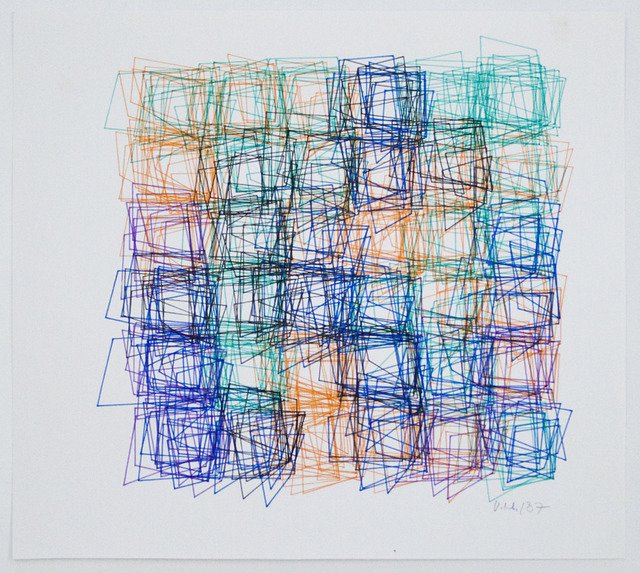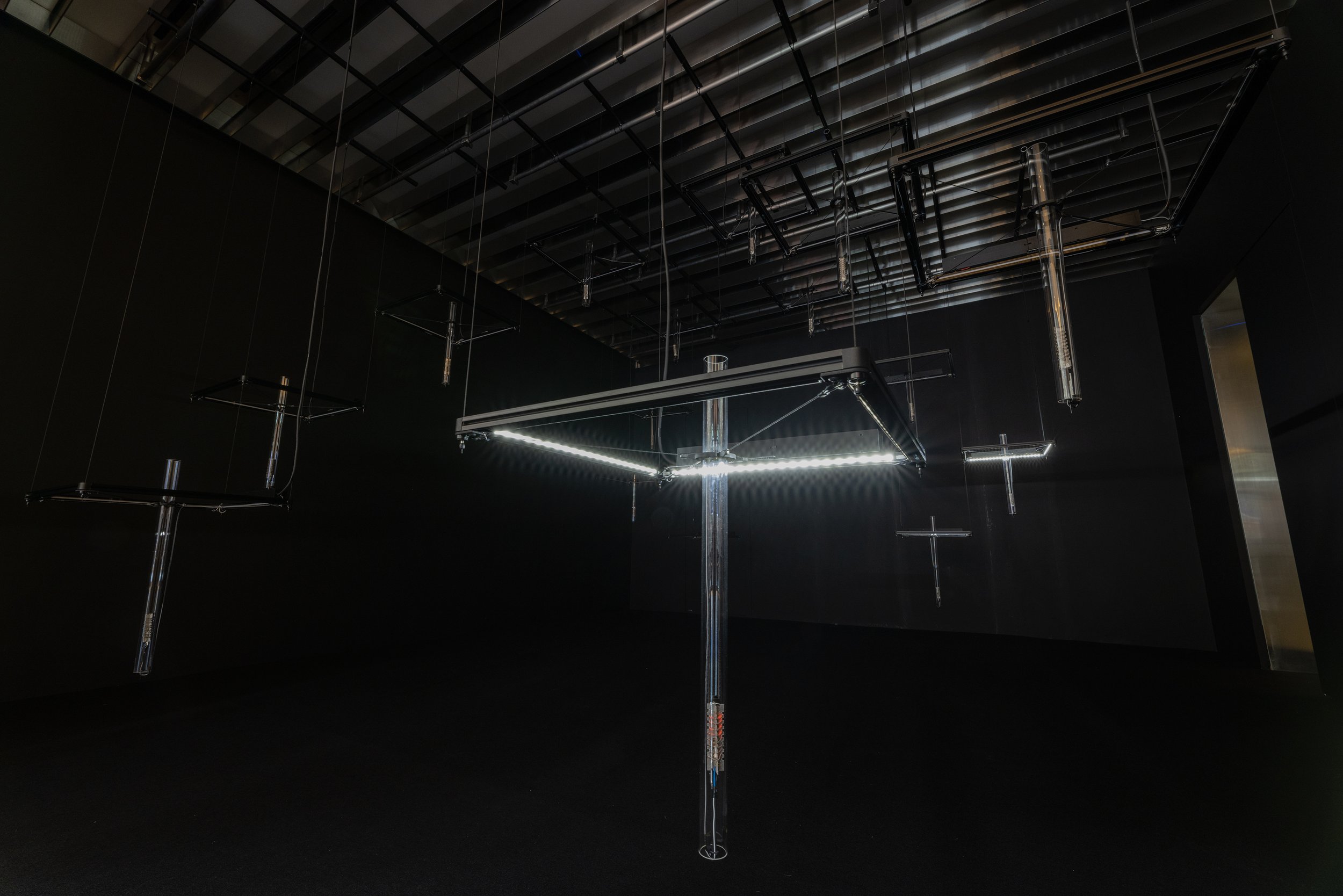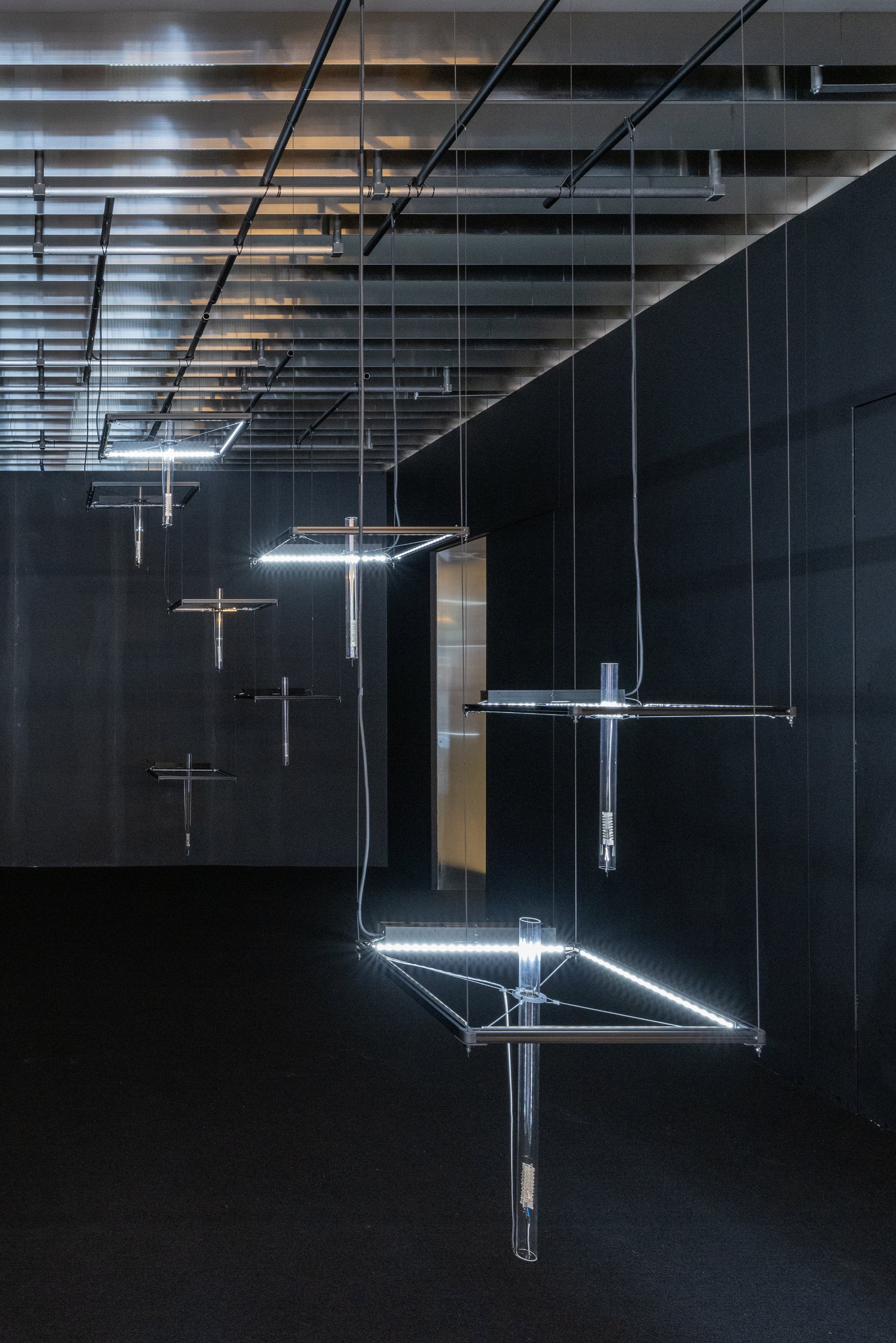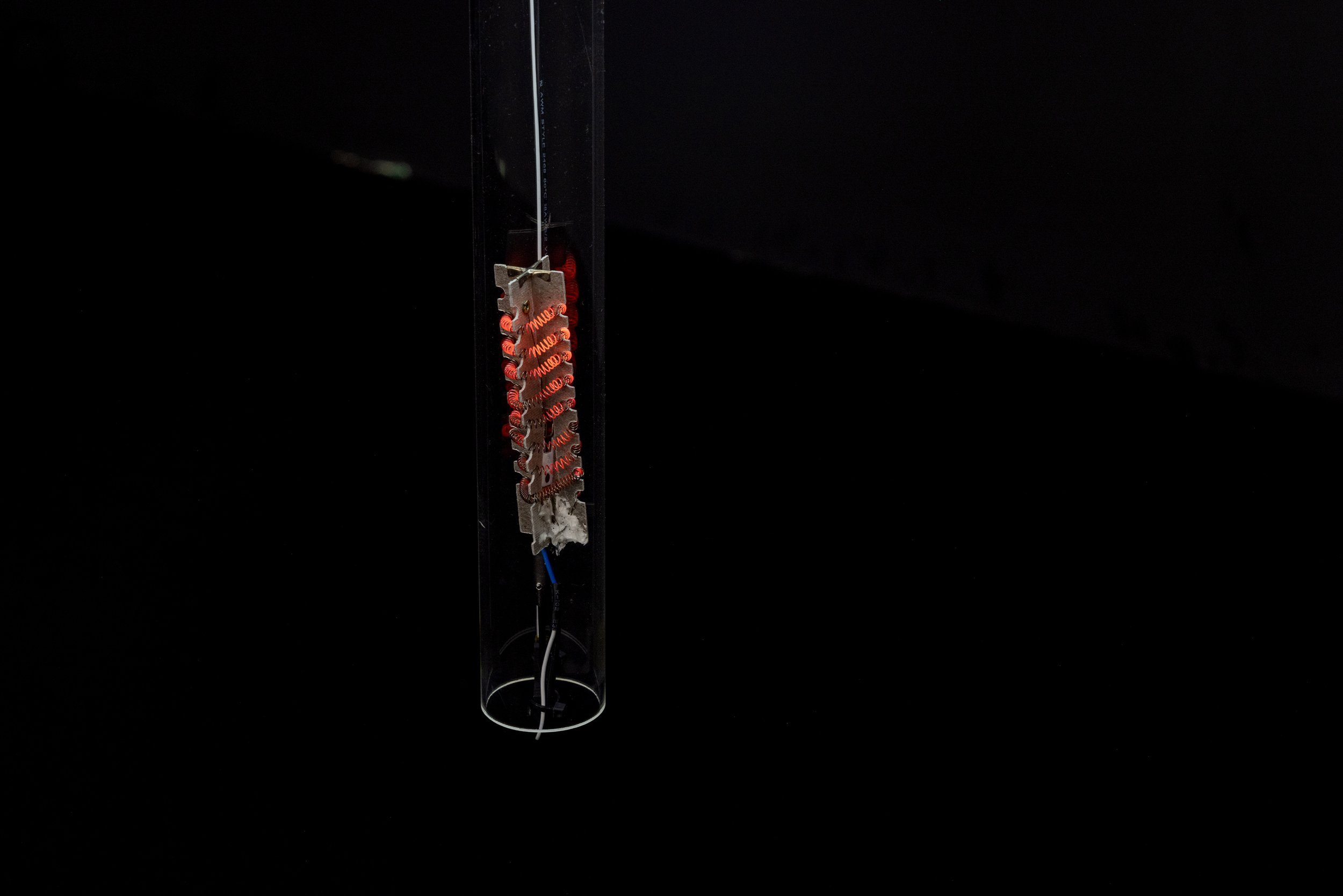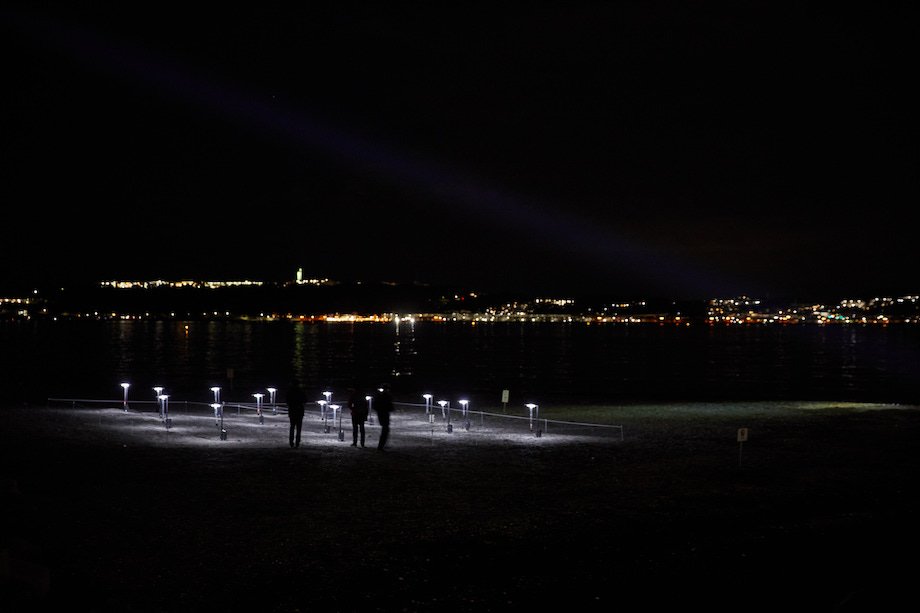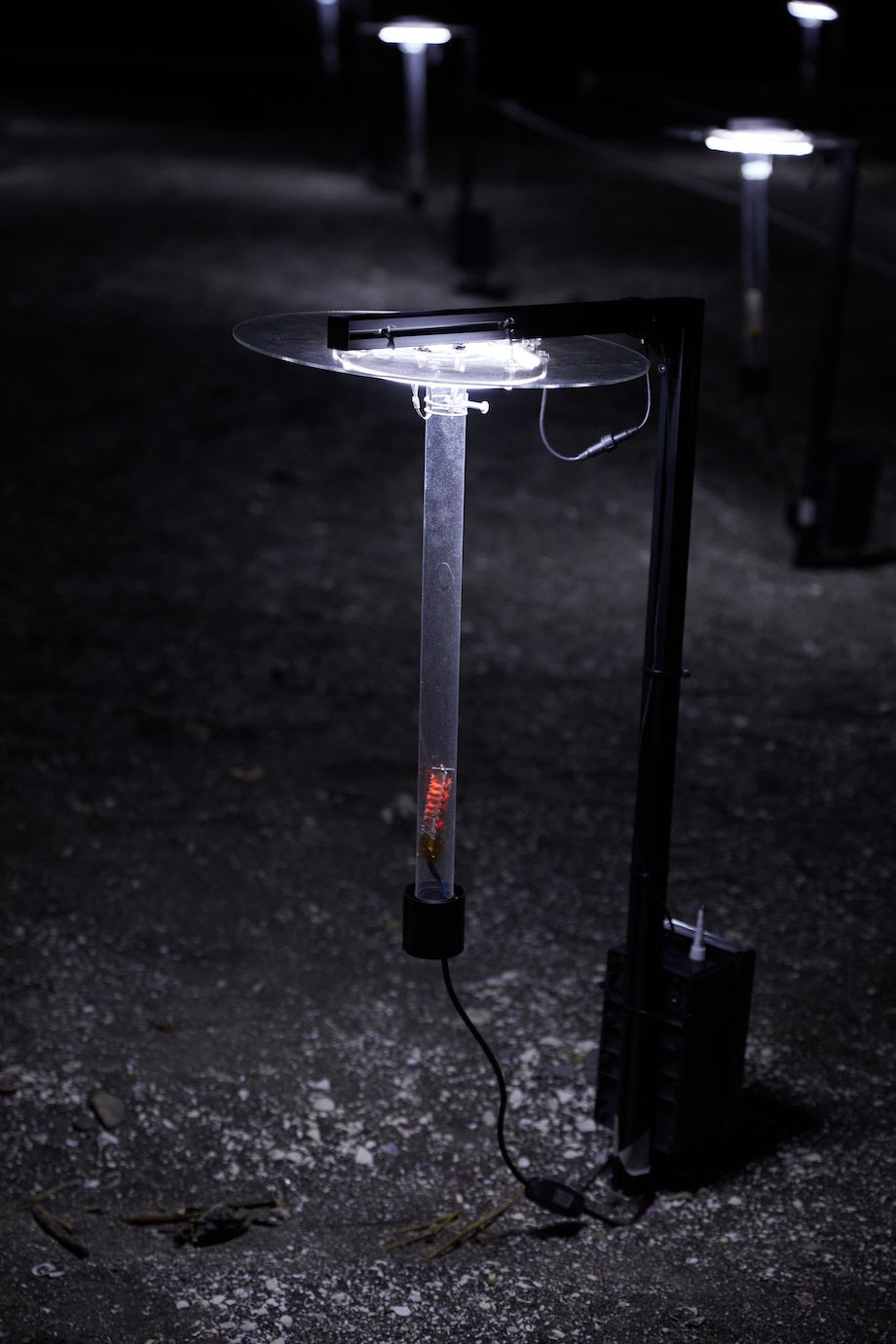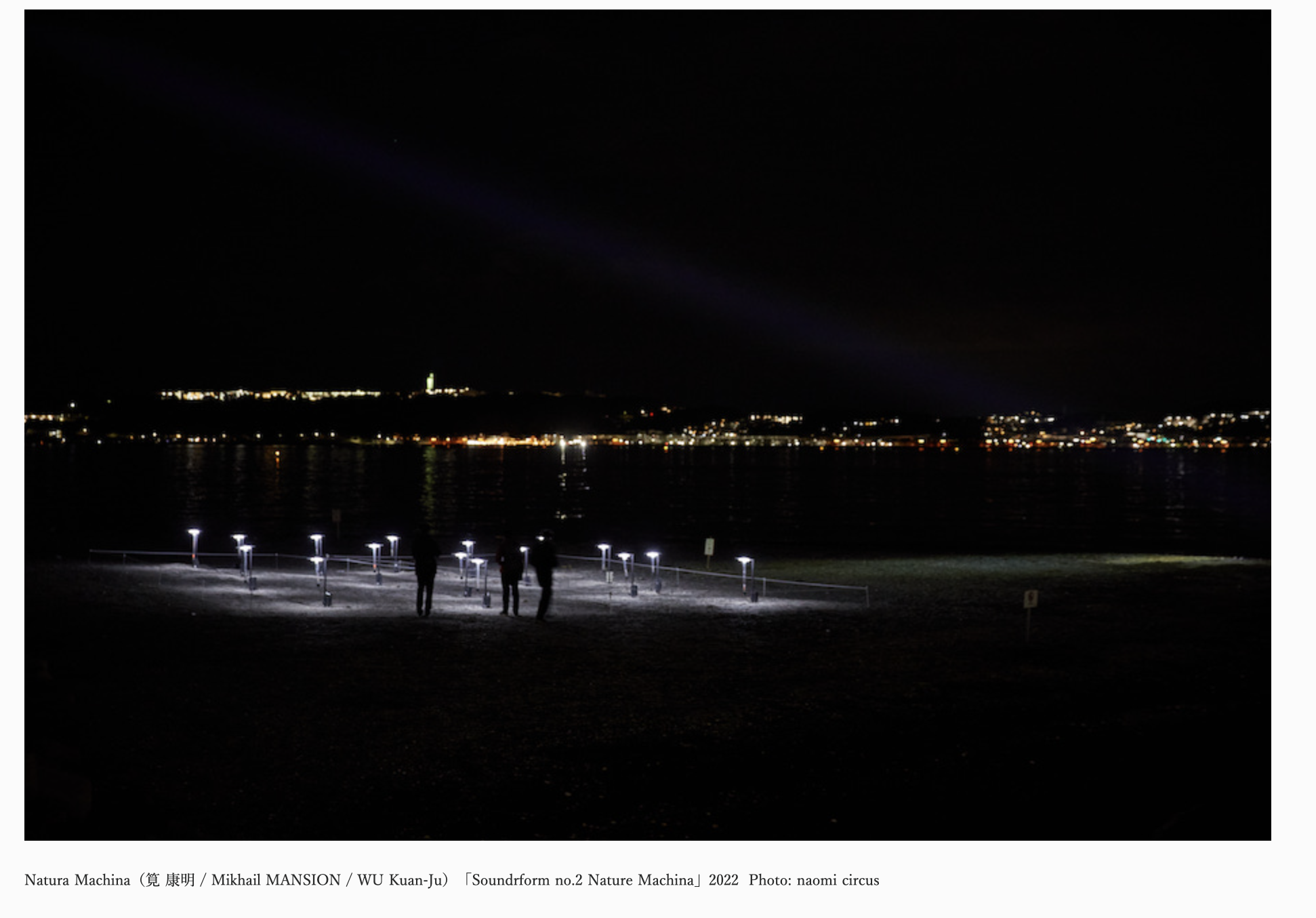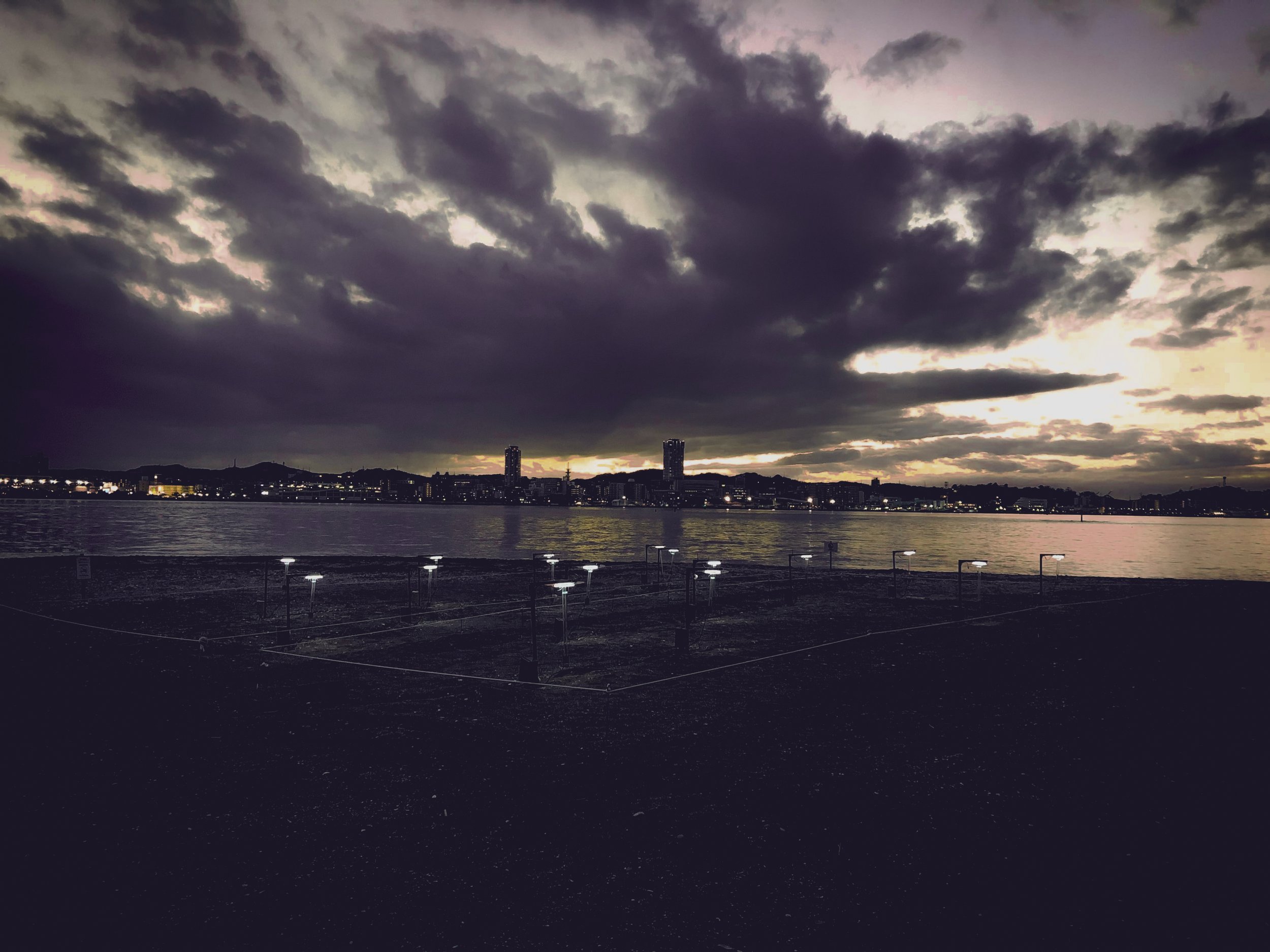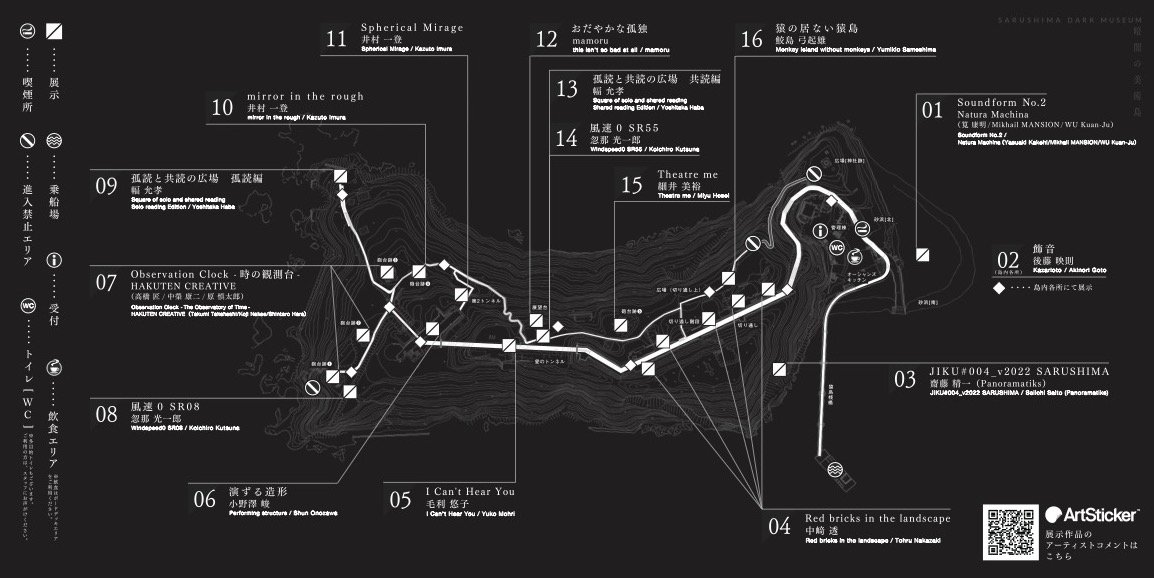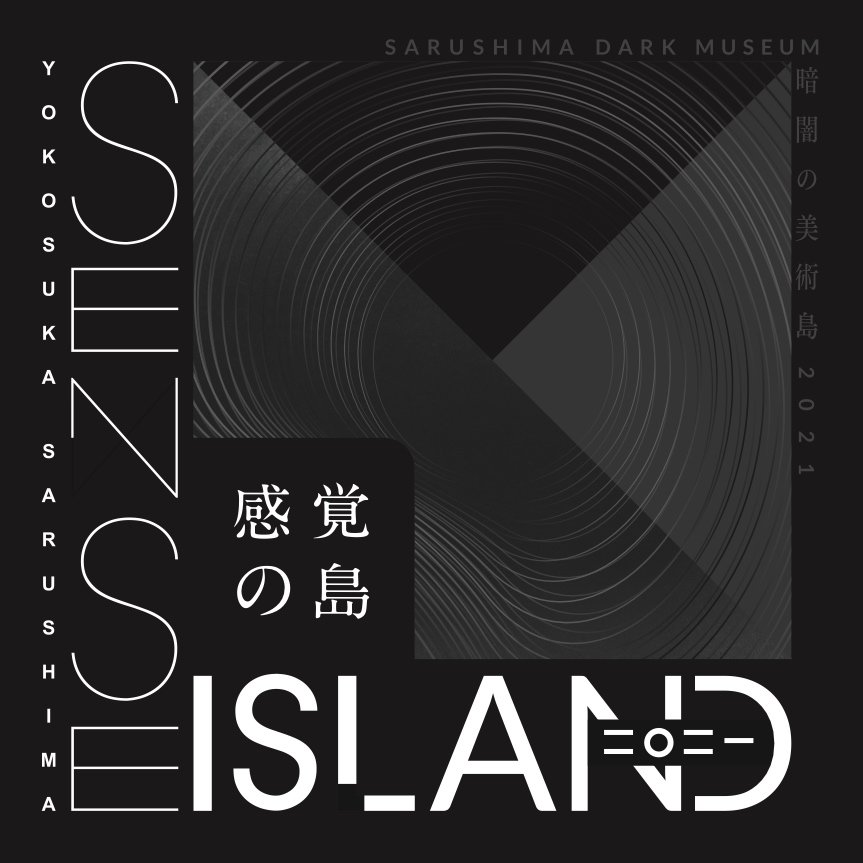Throughout the year, I pull aside tunes I like on SoundCloud into a bin. At the end of the year, I share it out—it’s a raw snapshot reflecting the ebbs and flows of my creative work. Here’s the 2024 bin. Enjoy!
Soundform No.2 at Zou-no-Hana Park: An Outdoor Resonance
When natural rhythms seem overshadowed, what can resonant tones teach us about listening?
I'm pleased to announce that Soundform No.2 has reappeared in the quiet glow of Zou-no-Hana Park in Yokohama. Presented as part of the Future Scape Project, this atmospheric outdoor version follows its earlier life in Sarashima, where it was first installed during the silence of the pandemic. Now it returns with a new context, sound, and setting, gently reframing how we tune into the environment by poetically sonifying atmospheric changes.
This iteration continues to embrace thermoacoustics, sound art, and environmental interaction. As heated air moves through glass and form, subtle tones resonate outward—an audible reminder of invisible forces at play. Against the night views of Yokohama, the installation becomes a bridge between material and ephemeral: physical glass, temperature, and air transformed into spatial soundscapes.
The Future Scape Project at Zou-no-Hana builds on this dialogue, inviting artists, communities, and passersby to experience new forms. Projection mapping, large-scale installations, and open-air performances dot the landscape. Together, they turn the city into a site of exploration, where each work hums with its question.
For me, Soundform’s return to this new space amplifies its sonic and reflective resonance. I’m grateful to join forces again with Natura Machina (@wu.kj and @yasuakikakehi) to present this work.
Dates: December 6th (Fri) – December 8th (Sun), 2024
Time: 4:30 PM – 9:30 PM
Location: Zou-no-Hana Terrace & Zou-no-Hana Park, Yokohama
Admission: Free
https://fsp.zounohana.jp/2024
Art Meets Atmosphere: Revisiting Len Lye's Wind-Driven Kinetic Form
Enttec - Intersection of Art and Light
I am honored that ENTTEC features my work, Nature Pix, on their website.
Nature Pix explores how technology can deepen our engagement with the natural world, illuminating subtle relationships that often go unnoticed. Working with ENTTEC’s systems offers an opportunity to experiment with light beyond its functional role—positioning it as a dynamic, interpretive force within the installation.
I am grateful to ENTTEC for engaging with my work and sharing it with their audience. It is encouraging to see recognition for projects that explore the intersection of art and technology, and I appreciate the chance to reflect on this collaboration through their feature.
From Military to New Media Art
I was intereviewed by AGNIESZKA CICHOCKA from DAILY ARTS MAGAZINE about my journey as an artist, engineer and entrepreneur. I enjoyed reflecting on my practicea, sharing about immersive storytelling, and speculating about the future of art and technology.
Read the article here:
Photo by TODD BATES
ICC Podcast, Natura Machina
Natura Machina was recently interviewed at the ICC in Tokyo, where they showcased their installation, Soundform No.4, as part of the ICC Annual 2023: "Shapes of Things" exhibition. The exhibition will be open for viewing until January 14th.
* Mr. KAKEHI speaks in Japanese, while Mr. MANSION and Mr. WU speak in English.
Vera Molnár
Vera Molnár, a pioneering figure in early computer art and algorithmic visual arts, passed away at the age of 99, leaving behind a profound legacy of influence among contemporary art practitioners. Since developing an interest in algorithmic art during my twenties, I have extensively studied and shared her remarkable work with students, often using it as a creative coding challenge or assignment. The New York Times has provided a thoughtful write-up on her enduring impact and artistic contributions.
At ICC Tokyo through Jan 2024 →
Soundform No.4 will remain on view through January 2024 as part of the annual exhibition at Intercommunication Center in Tokyo Japan.
https://www.ntticc.or.jp/en/archive/works/soundform-no-4/
Windfield No. →

Writing about my progress, insights, challenges, and milestones on making Windfield No.1
Read MoreOn Algorithmic Art
Recently I was invited to speak at the Dali Museum in St. Pete on the topic of algorithmic art. In this post I’d like to share some of my code examples from that talk and offer up some pointers for getting started in creative coding.
read the article
Generative Techniques
I put together this collection of code examples for my talk at Dali Museum on Algorithmic Art. The collection represents some common techniques used by generative and algorithmic artists. Enjoy!
Talk at Dali Museum on Algorithmic Art

lecture: algorithmic art
july 27 @ 6:00pm – 7:30pm
New to algorithmic art? Join presenter Mikhail Mansion as he dives into this emerging form of digital art that uses code as a medium for artistic expression. During the lecture, get an overview of the history and practice of algorithmic art and a glimpse into how it can be created. Mikhail will be showcasing algorithmic art’s use in both his and other artists’ work before concluding with an audience Q&A session.
Read MoreICC Annual 2023 "Shape of Things"
I’m very excited to announce that I'll be showing the artwork Soundform No. 4 at the ICC Annual 2023 Exhibition “The Shape of Things”. Dates: Saturday, June 24, 2023 - Sunday, January 14, 2024
Venue: NTT InterCommunication Center [ICC] Gallery B, Hyper ICC. Natura Machina is a collaboration between Mikhail Mansion, Yasuaki Kakehi and Kuan Ju Wu.
More details here
Grids in Nature, Design and Generative Art
Grids have been used for centuries to transform ideas into tangible designs. They offer a simple, but effective framework, for organizing space and breaking down information into quantified units that we can more easily reckon with. As a generative artist who uses code as a medium, I rely on grids as foundational objects for building complex computational drawings. In this article, I’d like to explore how grids can be observed in both nature and culture, and how I use them for creative coding. By the end, I hope you will take a new perspective on the nature of grids, and gain practical insight for how grids are used in creative coding to make generative art.
Code as a Creative Medium
Most of my work requires some level of code—either creative visual or sonic output, or to bring a kinetic sculpture life. Creative coding is wide.
According to Golan Levin and Tega Brain, experts in creative coding pedagogy for over 30 years, “It’s difficult to overstate the importance of computational literacy in the 21st-century life. Computer programming, once an esoteric skill in engineering and business, has now acquired broad applicability in fine arts, design, architecture, music, humanities, journalism, activism, poetry, and many other creative fields.”
If you’re interested in this code and computation in an arts context I invite you to read my article on using code as a creative medium, written for Creative Pinellas Magazine. There I discuss my practices as a creative coder and highlight other artists who inspired me to discover code as a creative medium.
https://creativepinellas.org/magazine/code-as-a-creative-medium/
2023 Prof Artist Grant and Artist Laureate
I’m excited to announce that I've been awarded the 2023 Professional Artist Grant from Creative Pinellas. I was also selected as this year's Artist Laureate, which is such a wonderful and surprising honor.
As part of the Artist Laureate program I’ll be showcasing my works in a solo exhibition at their beautiful gallery space located at the Florida Botanical Gardens, in early 2024.
Thanks to Creative Pinellas for supporting and promoting the arts and cultural sector in the Tampa Bay for over a decade!. You can read more about their work, and about this year’s grantees here:
https://creativepinellas.org/opportunity/professional-artist-grant-23/
2023 Muse Award for Art + Technology
I’m honored to receive the 2023 Muse Award for Art + Technology from the St. Petersburg Arts Alliance. I’m grateful SPAA’s founder John Collins, as well as the many local artists, who collaborated to making this area a leading arts destination. I'm always amazed at the level of support the community here gives to its artists; it's rewarding to know that my contributions are too becoming part of that legacy.
Mikhail Mansion in front of Fairgrounds St. Pete, an immersive art and technology museum he co-founded and designed.
Natura Machina at INTERSECT by LEXUS
In an increasingly connected world, it can be easy to forget the importance of connecting ourselves with nature. The artist collective Natura Machina believes there are many subtle and poetic ways to experience the natural world – and we explore how our connected technologies can help us do it.
Natura Machina develops works under the theme of newly discovered "nature" and connection with the surrounding environment through mechanical devices. Our latest artwork is based on their recent exploration of thermoacoustic phenomenon using Rejke Tubes, which converts thermal energy into air vibrations.
Our installation "Ethereal Cycles" provides an experience through its unique way of converting electric energy into sound. Since our concept resonated with Lexus’ efforts to deliver innovative and amazing experiences through electrification, we teamed up to deliver a unique experience at INTERSECT BY LEXUS - TOKYO.
INTERSECT BY LEXUS -TOKYO will exhibit "Ethereal Cycles," a spatial installation work using thermoacoustics and light, from October 28, 2022 (Friday) to January 25, 2023 (Wednesday).
Please visit Lexus Intersect to learn more.
https://lexus.jp/international/brand/intersect/tokyo/garage/ethereal-cycles.html
Sense Island - Japan
Island of Senses - Island of Dark Art (感覚の島- 暗闇の美術島) is open. Visitors can come explore the uninhabited island of Sarushima (猿島, "Monkey Island") at night to experience a range of new media art installations that will stimulate your senses and imagination.
今週末から横須賀の無人島・猿島で「Sense Island -感覚の島- 暗闇の美術島」が始まります。
Exhibition runs for 22 days (Sat. 22 Jan - Sun. 6 Mar, 2022). Tickets are available online:
https://senseisland.com
I’m excited to announce that this year "Soundform No. 2" is being featured at Sense Island!
In 2019 we debuted "Soundform No.1" at Ars Electronica, an investigation into the use of heat-actuated air columns made of glass, utilized as an alternate form of generative media and creative sound synthesis. In 2020 the work was featured at the Tokyo-based Miraikan Museum for Emerging Science and Innovation, winning the Japan Media Art Festival’s excellence award.
Continuing our exploration, we adapted the artwork for the outdoors, and installed it on the island of Sarushima, Tokyo-bay’s only uninhabited island. Its durability quickly tested as it became temporarily submerged by a tsunami, caused by an underwater volcanic eruption near the island of Tonga!
This artwork is a collaboration between Mikhail Mansion, Yasuaki Kakehi and Kuan Ju Wu—collectively Natura Machina.
Natura Machina is an experimental artist collective that theorizes and explores a new aesthetic convergence between nature and machine through the advent of new media art.
Drawing on nature for inspiration, input and source, Natura Machina seeks to uncover new modalities of experience, communication and creative expression. Through research, design and fabrication of new media arts installations, the group explores forces, ephemera, patterns, perception, interactions, sensation, motions, spaces, sounds and numerical relationships between natural environments and artificial systems and machines.
2021 bin!
The “2021 bin” is the Soundcloud playlist of favorited tunes our team was jamming on in the tech lab, building Fairgrounds St. Pete. Good memories and sounds from the past year. Enjoy!





